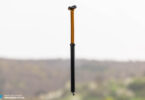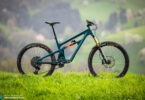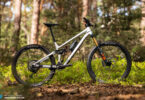Nobody expected LAST to present an updated version of the COAL and GLEN. The premium German brand is on fire, presenting two exciting new bikes shortly after launching their lightweight carbon enduro bike, the TARVO. We put the COAL 29 to the test in an exclusive first ride review.

One frame, two bikes: the LAST COAL and GLEN in detail
The new COAL 29 is distinctly recognisable as a LAST. However, the premium German brand has made some significant changes to the frame of the enduro bike, making it even more versatile. For 2021, the COAL enduro bike and GLEN trail bike share the same front and rear triangle, using a different rocker link, shock length and matching fork to adapt the bikes to their respective area of application. Both bikes are available as either a pure 29″ version or an MX version with a 27.5″ wheel on the rear. This is made possible by swapping out the link between the main rocker and the rear triangle. While the 160 mm travel COAL is combined with a 170 mm fork, the GLEN offers 145 mm travel and comes specced with a 150 mm fork.
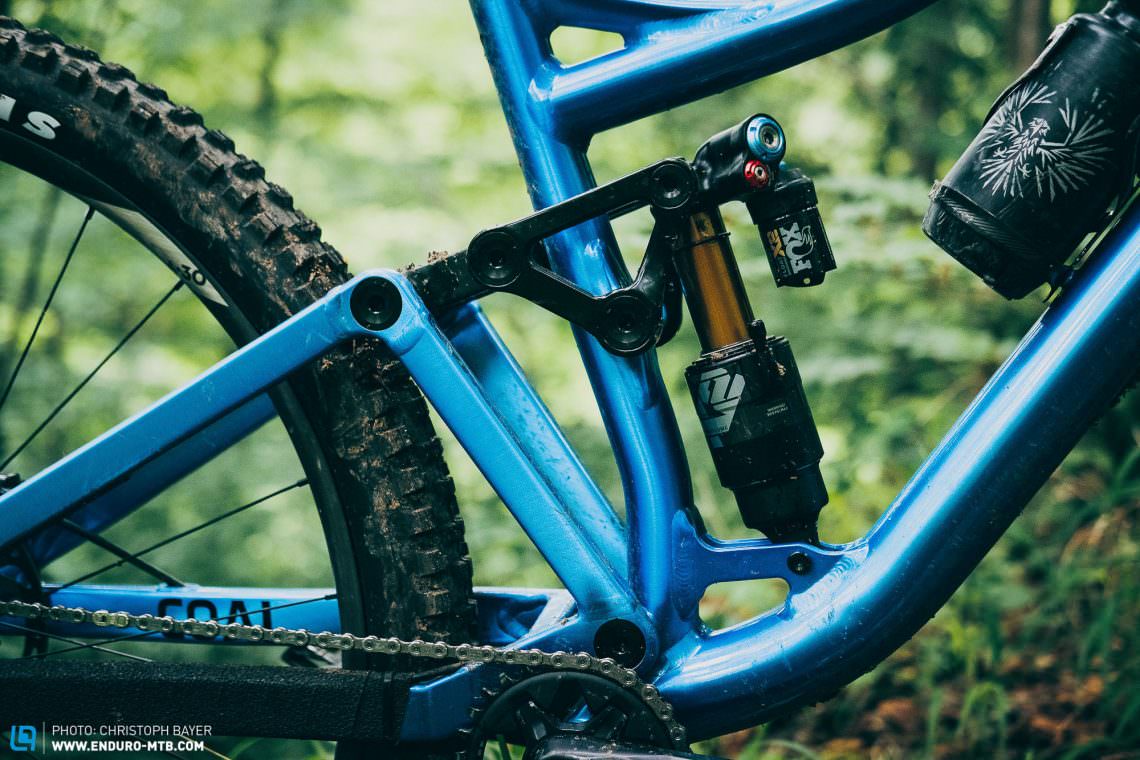
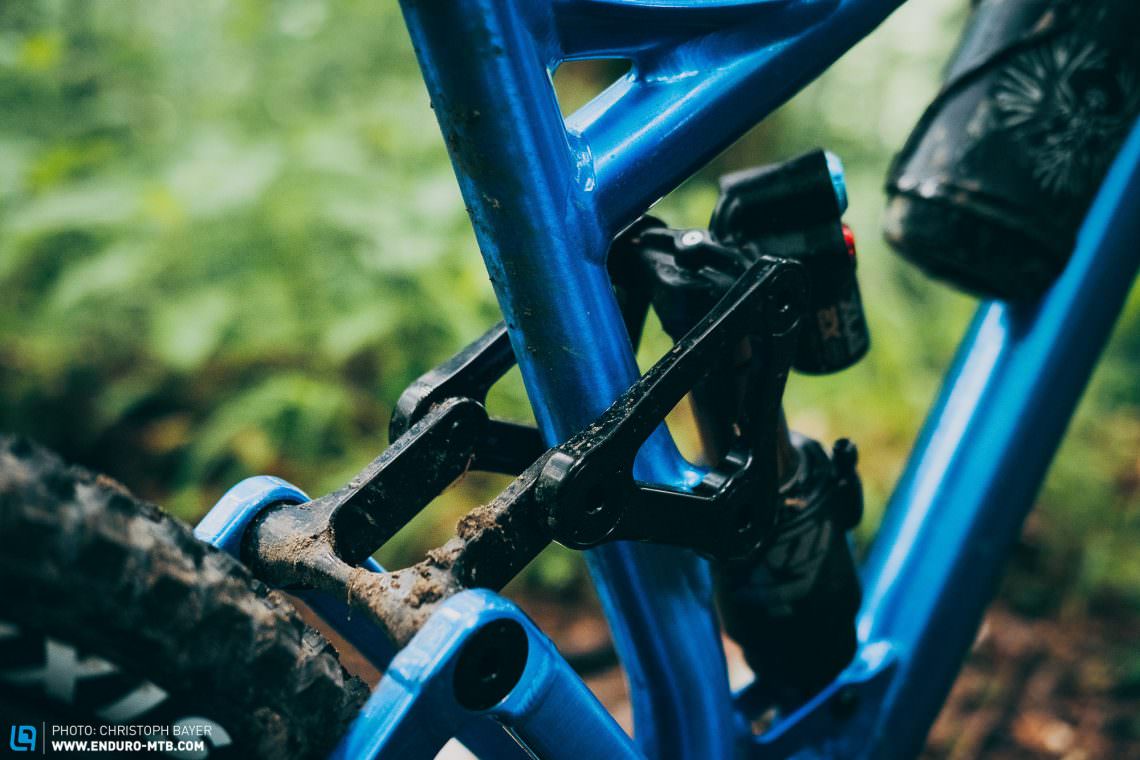
The hard facts of the new LAST COAL and GLEN frame:
- Material: 6011 aluminium
- Frame weight: from 2,9 kg
- Travel: COAL 160 mm / GLEN 145 mm
- Shock length: COAL 205 x 65 mm / GLEN 210 x 55 mm
- Wheelsize: 29″ or MX with 27.5″ rear wheel
- Frame size: 155, 165, 175, 185 und 195
- Price: from € 1,799 (frameset)
- Warranty: 2 years including bike park approval and a 3 year crash replacement
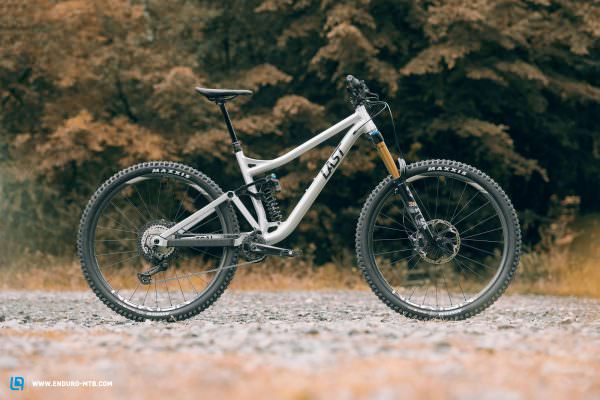
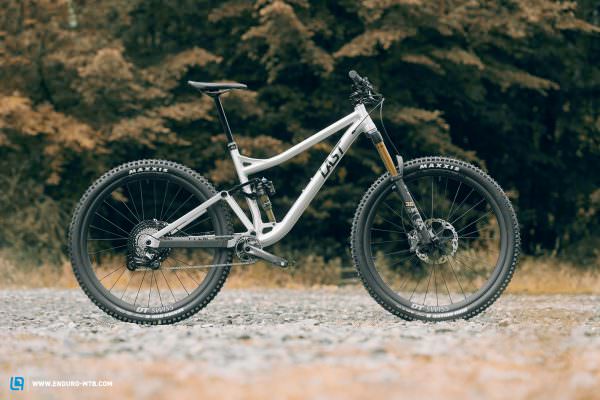
High-quality, cleverly designed and durable – the frame of the COAL
Ever heard of “Total Bearing Quality”? Probably not. LAST have prioritised designing the bike in such a way that you can spend more time on the trail and less time in the workshop. An essential component of this is using high-quality bearings for the linkages, but that isn’t the only aspect to consider. Even top of the range Enduro Bearings are no use if they’re not properly seated in the frame. Therefore, once the frames are shipped from the factory in Taiwan, the final touches are made in Germany. All the bearing seats are machined on a 5-axis milling machine. The linkage contact points and threads are also cut in Germany. This isn’t something you’ll immediately notice when looking at the bike, but it promises to pay off after years of abuse.
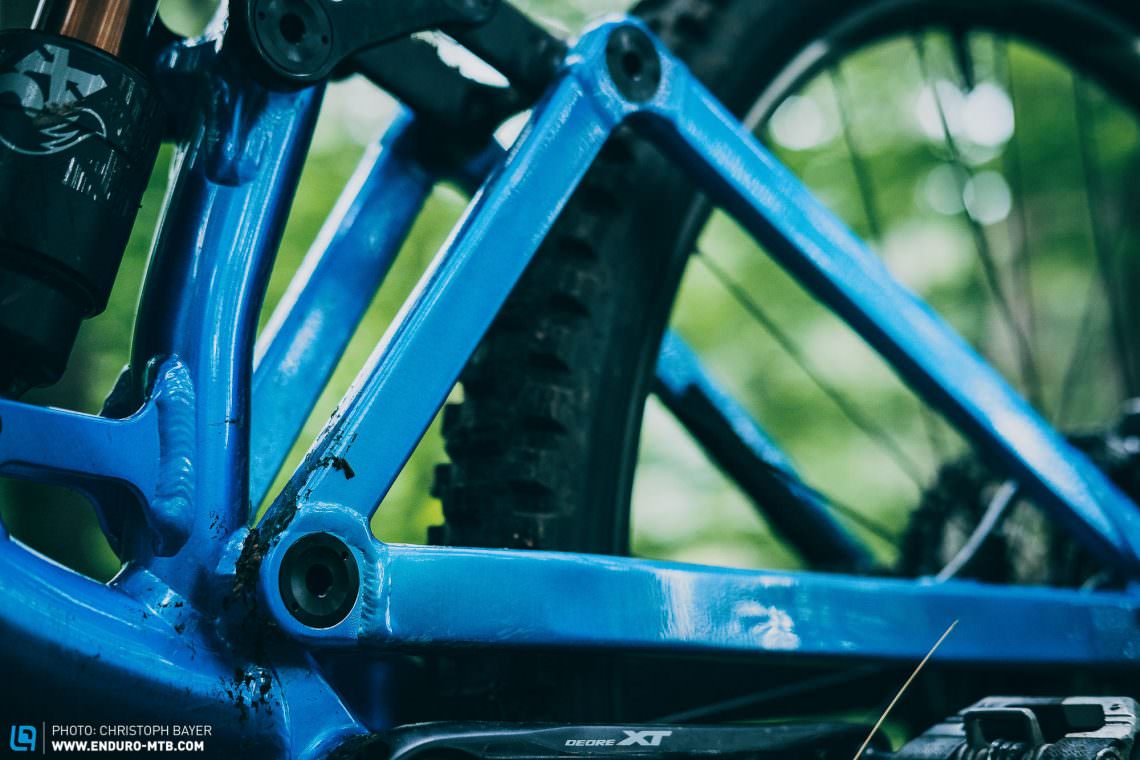
To make the life of riders even easier, LAST rely on the new Universal Derailleur Hanger and a threaded BSA bottom bracket for their latest bikes. The lower shock mounting hardware is made of colour matched titanium. If you’d like to use a chain guide, you have the option of clamping an ISCG mount to the bottom bracket.
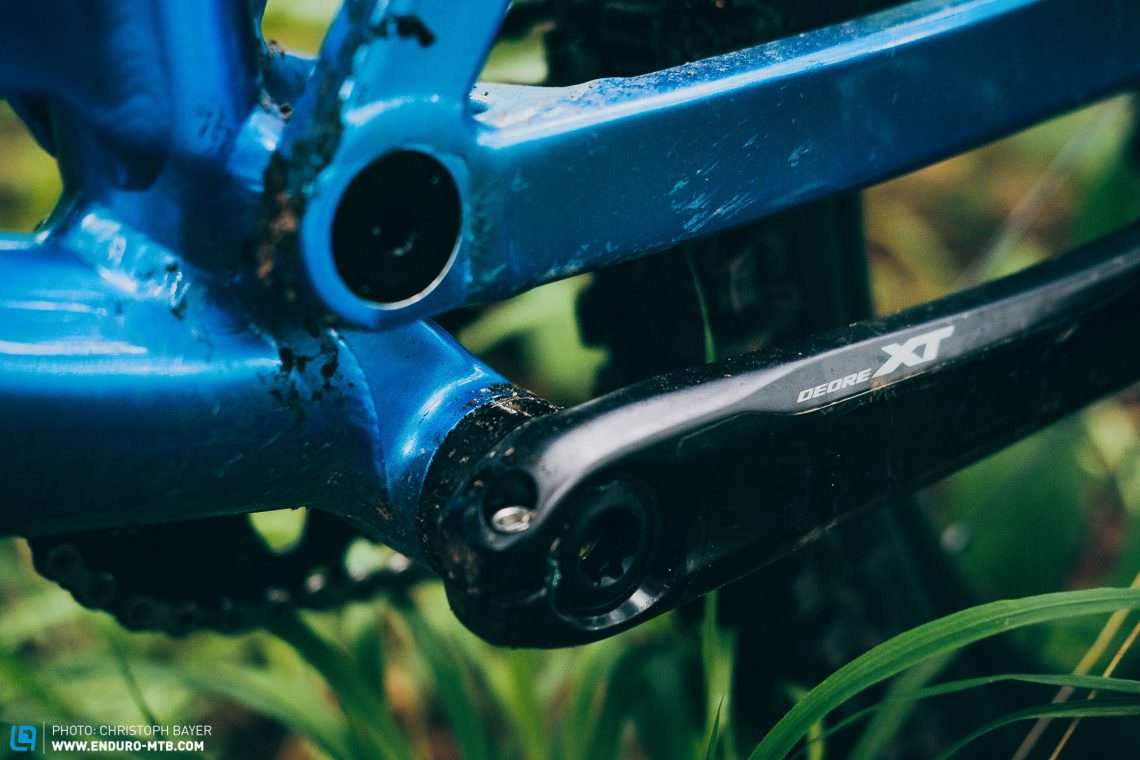
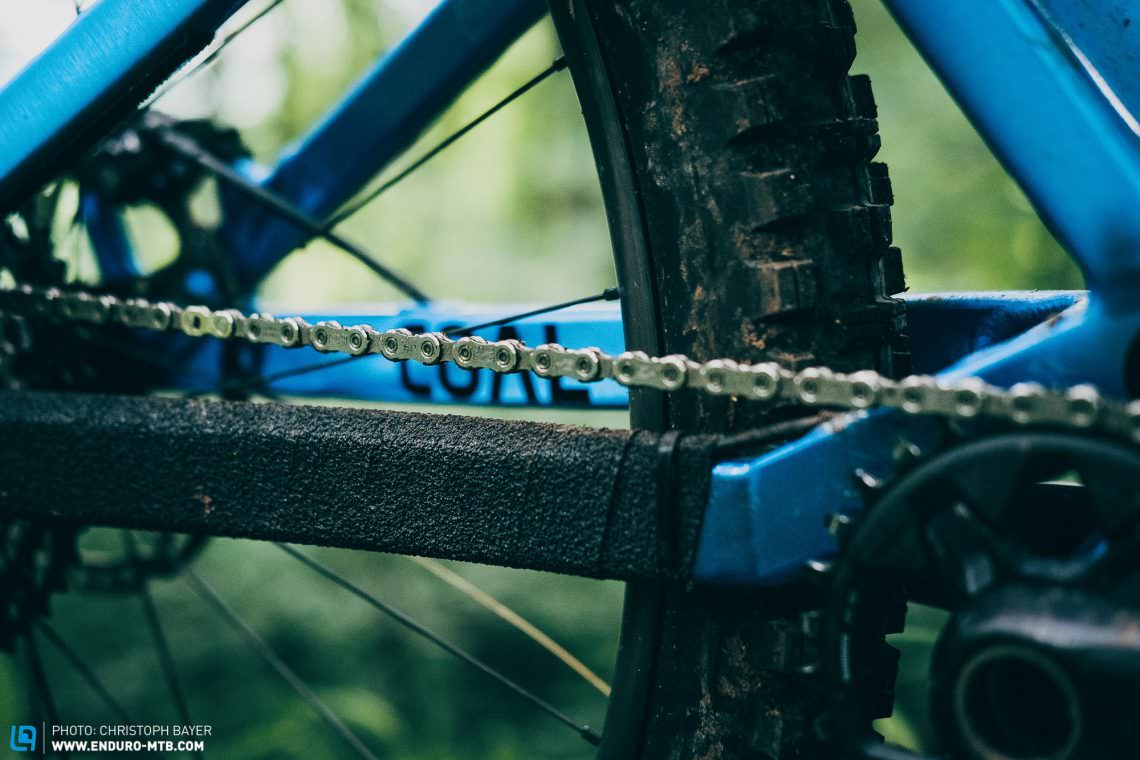
LAST’s latest bikes are available in three standard colours: raw, black anodised or with a blue powder coating as shown here. If you want to go down the custom colour route, you can do so for an additional € 799. LAST offer a two-year warranty on the frame and also provides riders with a three-year crash replacement, not just for the original owner but every subsequent owner of the frame.

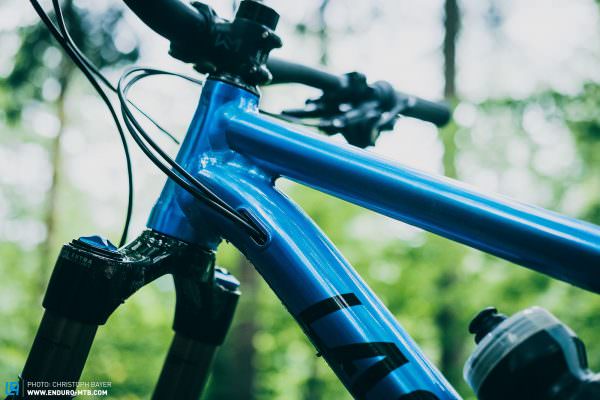
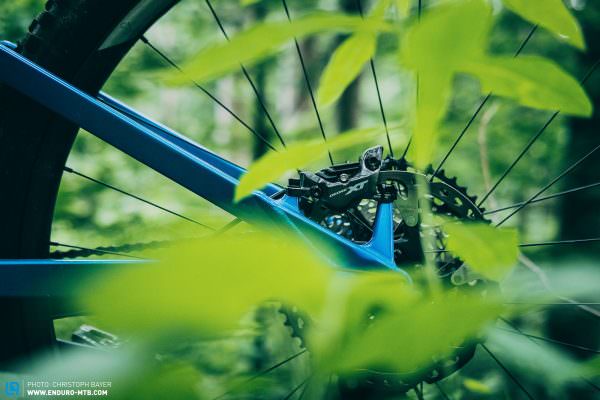
Internal cable routing is another new feature of the new COAL and GLEN frame. The cables are routed through the frame in special foam sleeves to keep the bike nice and quiet. The cables exit the frame close to the pivot point. The shifter cable continues on the outside of the chainstay while the brake line reenters the frame.

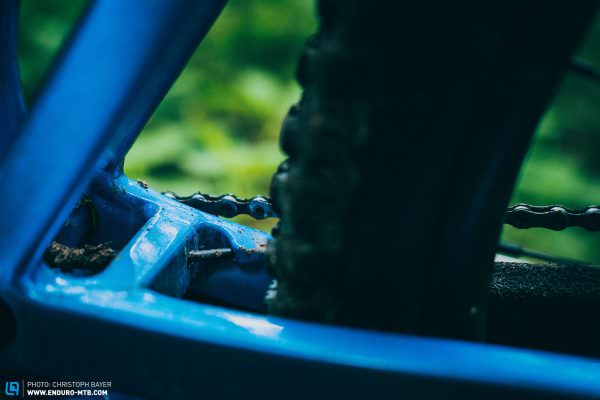

The geometry of the new LAST COAL 29
The geometry of a modern enduro bike is characterised by more than a long reach and a particularly slack head angle. Besides the optimal balance, you also want as much freedom of movement as possible with a low slung top tube and a short seat tube that will accommodate a long travel dropper post. The new LAST COAL 29 easily checks all of the above and offers the added bonus of size-specific chainstay lengths. This is achieved by changing the positioning of the pivot point on the front triangle. At 428 mm, the chainstay length in size 155 is extremely short for a 29er, growing to 444 mm in size 195. Speaking of sizes: LAST don’t designate their frame sizes by way of S, M, L and so on, choosing to indicate the optimal rider size instead. Thanks to the short seat tubes, riders that fall in the middle of two sizes can choose based on their desired reach. Measuring 180 cm tall, we chose the 185 version.
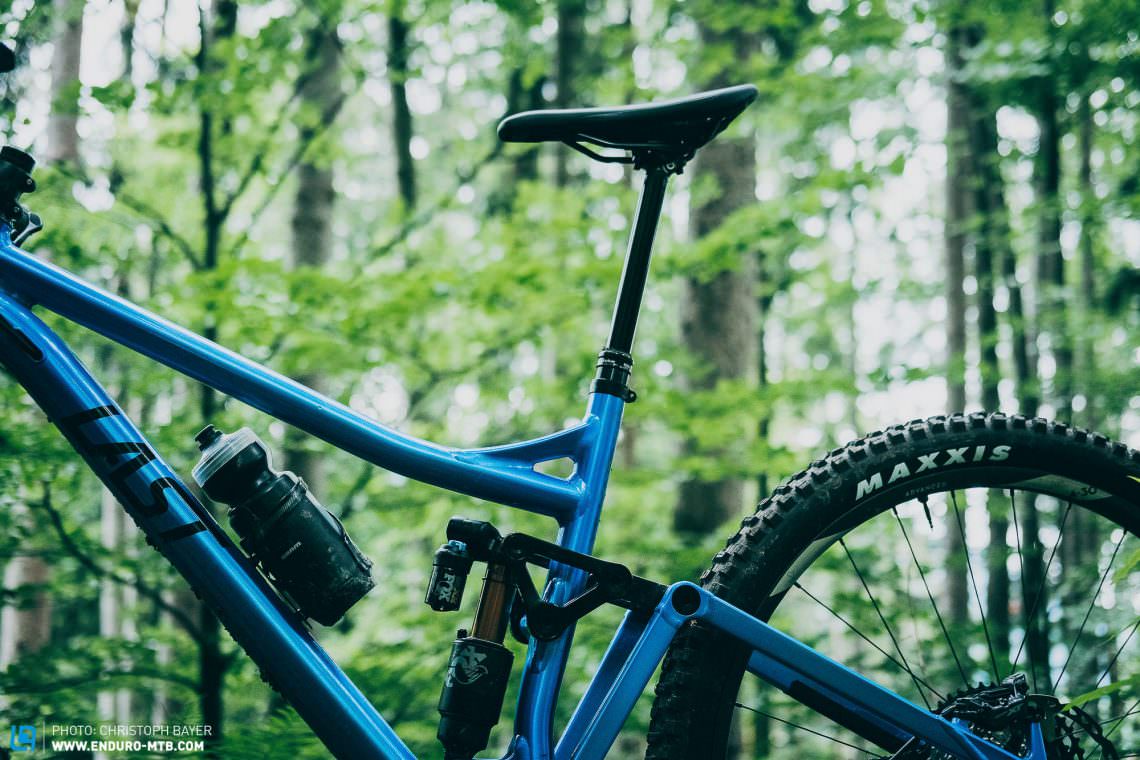
Another unique aspect of the geometry is that the bottom bracket is 5 mm lower in the smaller frame sizes due to the use of shorter cranks, and the seat tube angle is a little steeper on the larger versions to position the rider more centrally on the bike with the seat post fully extended.
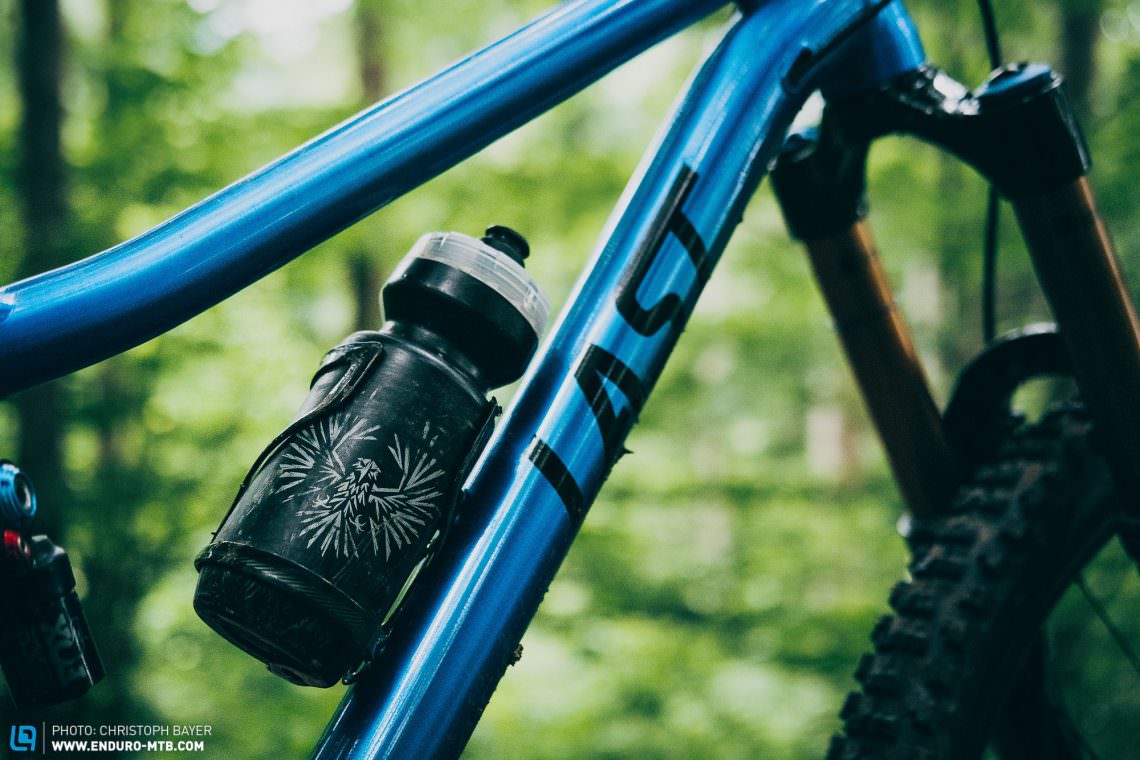
The geometry of the LAST COAL at a glance:
| Size | 155 | 165 | 175 | 185 | 195 |
|---|---|---|---|---|---|
| Seat tube | 385 mm | 385 mm | 415 mm | 455 mm | 510 mm |
| Top tube | 555 mm | 584 mm | 611 mm | 642 mm | 675 mm |
| Head tube | 95 mm | 95 mm | 110 mm | 120 mm | 130 mm |
| Head angle | 64° | 64° | 64° | 64° | 64° |
| Seat angle | 76° | 76° | 76° | 76° | 76° |
| Chainstay | 428 mm | 430 mm | 432 mm | 438 mm | 444 mm |
| BB drop | 32 mm | 32 mm | 27 mm | 27 mm | 27 mm |
| Wheelbase | 1184 mm | 1194 mm | 1227 mm | 1268 mm | 1313 mm |
| Reach | 400 mm | 429 mm | 454 mm | 485 mm | 518 mm |
| Stack | 622 mm | 622 mm | 631 mm | 640 mm | 649 mm |
In terms of geometry, the head and seat tube angles of the COAL are 1° slacker than the GLEN, the reach is one centimetre longer and the stack is just short of one centimetre lower. The bottom bracket of the GLEN is designed to be lower since it’s a shorter travel bike. Should you choose to run a 27.5″ wheel on the rear by making use of the so-called MX-Link, the geometry of both bikes remains identical.
The geometry of the LAST GLEN at a glance:
| Size | 155 | 165 | 175 | 185 | 195 |
|---|---|---|---|---|---|
| Seat tube | 385 mm | 385 mm | 415 mm | 455 mm | 510 mm |
| Top tube | 554 mm | 582 mm | 609 mm | 639 mm | 673 mm |
| Head tube | 95 mm | 95 mm | 110 mm | 120 mm | 130 mm |
| Head angle | 65° | 65° | 64.9° | 64.9° | 64.9° |
| Seat angle | 77° | 77° | 76.9° | 77.1° | 77.3° |
| Chainstay | 427 mm | 429 mm | 431 mm | 438 mm | 444 mm |
| BB drop | 37 mm | 37 mm | 32 mm | 32 mm | 32 mm |
| Wheelbase | 1154 mm | 1185 mm | 1218 mm | 1260 mm | 1304 mm |
| Reach | 411 mm | 440 mm | 464 mm | 495 mm | 528 mm |
| Stack | 622 mm | 622 mm | 631 mm | 640 mm | 649 mm |
Progressive and frame size specific – the kinematics of the LAST COAL 29
For the COAL and GLEN, LAST rely on a linkage driven single pivot design with a very progressive tune overall. The progression allows you to ride the bike either with an air or coil shock and should ensure that the rear end stays responsive off the top with a lot of mid-stroke support and plenty of reserves for missed lines and flat landings. LAST also claim that the low leverage rate towards the end of the stroke puts less stress on the bearings. The progression rate is indicated at 41% – measured from the SAG point to the end of the travel.

Since LAST choose to adapt the chainstay length according to the frame size via the position of the pivot point, they also use the opportunity to adjust the kinematics to the respective rider size and thereby achieve the optimal performance for all riders. In order to keep the performance as similar as possible on every frame size, the design takes into account the fact that the centre of gravity and thus also the anti-squat value changes depending on the size of the rider. In general, with 110 % anti-squat at 30% SAG hints at a very pedal-efficient rear end. We’ve written a separate, <a href="http://Since LAST choose to adapt the chainstay length according to the frame size via the position of the pivot point, they also use the opportunity to adjust the kinematics to the respective rider size and thereby achieve the optimal performance for all riders. In order to keep the performance as similar as possible on every frame size, the design takes into account the fact that the centre of gravity and thus also the anti-squat value changes depending on the size of the rider. In general, with 110 % anti-squat at 30% SAG hints at a very pedal-efficient rear end. We've written a separate, in-depth article on the subject of kinematics and the different rear linkages.

Your wish is LAST’s command – custom build options
LAST offer both the new COAL and the GLEN as a frame, frame kit including a shock and as a complete bike. The raw frame by itself starts at € 1,799, or € 2,358 with a FOX X2 Factory shock. Complete builds start at € 3,539 for the COAL and € 3,299 for the GLEN. Our test bike with the burly FOX 38 Factory fork, a complete Shimano XT drivetrain, a 185 mm BikeYoke dropper post and light Newmen Advanced SL 30 carbon wheels is priced very fairly at € 5,489. To find out what your dream bike would cost, check out the configurator on the LAST website.

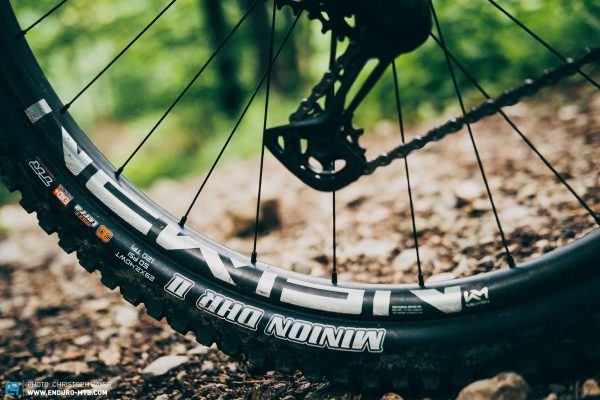
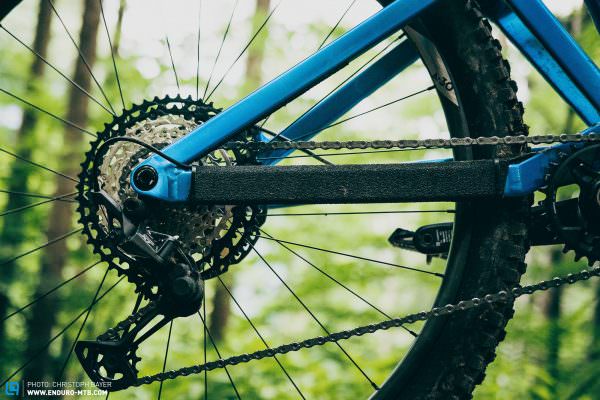
Composed, stable yet fun – the LAST COAL 29 on the trail
The LAST COAL 29 proves that geometry tables are rarely able to reveal the whole truth about a bike. If you consider the long 485 mm reach, the slack 64° head angle and the short 438 mm chainstays, you would expect to have to ride the bike very actively in the corners to generate sufficient grip on the front wheel. However, the COAL feels nowhere near as radical as the geometry table suggests and the reason for this is its suspension. The rear end offers a lot of support and doesn’t wallow, ensuring that the dynamic geometry feels a lot more balanced than bikes with significantly more moderate geometry while keeping enough weight on the front wheel.
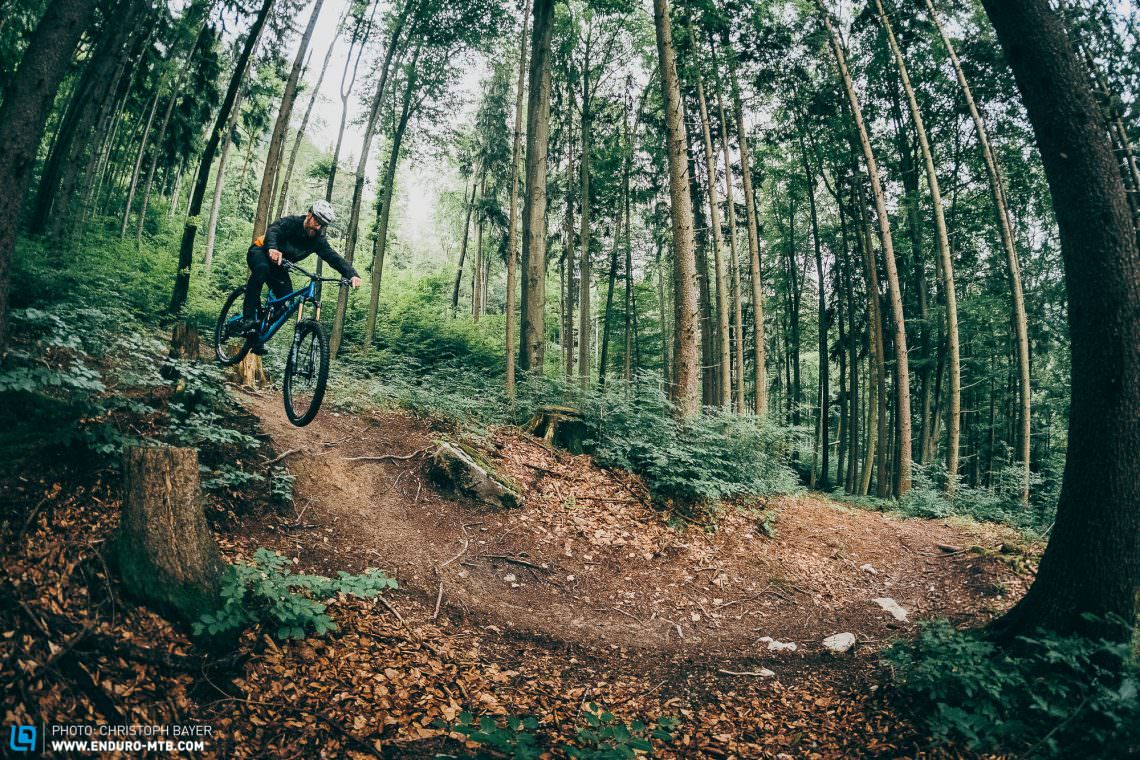
The rear end feels very poppy and offers tons of reserves!
On the trail, the COAL offers a lot of pop, feeling snappy and precise as it responds to the rider’s input. The rear end is sensitive enough, though not as plush as other bikes in this category. It does a good job of filtering out large impacts, but it makes no secret of what’s happening on the trail beneath you. You can definitely feel the high progression rate and we were rarely able to make full use of the bike’s stated travel, which is only reserved for the absolute worst-case or hucking to flat. Riders who prefer a plush bike or demand maximum traction are best advised to resort to a coil shock here.
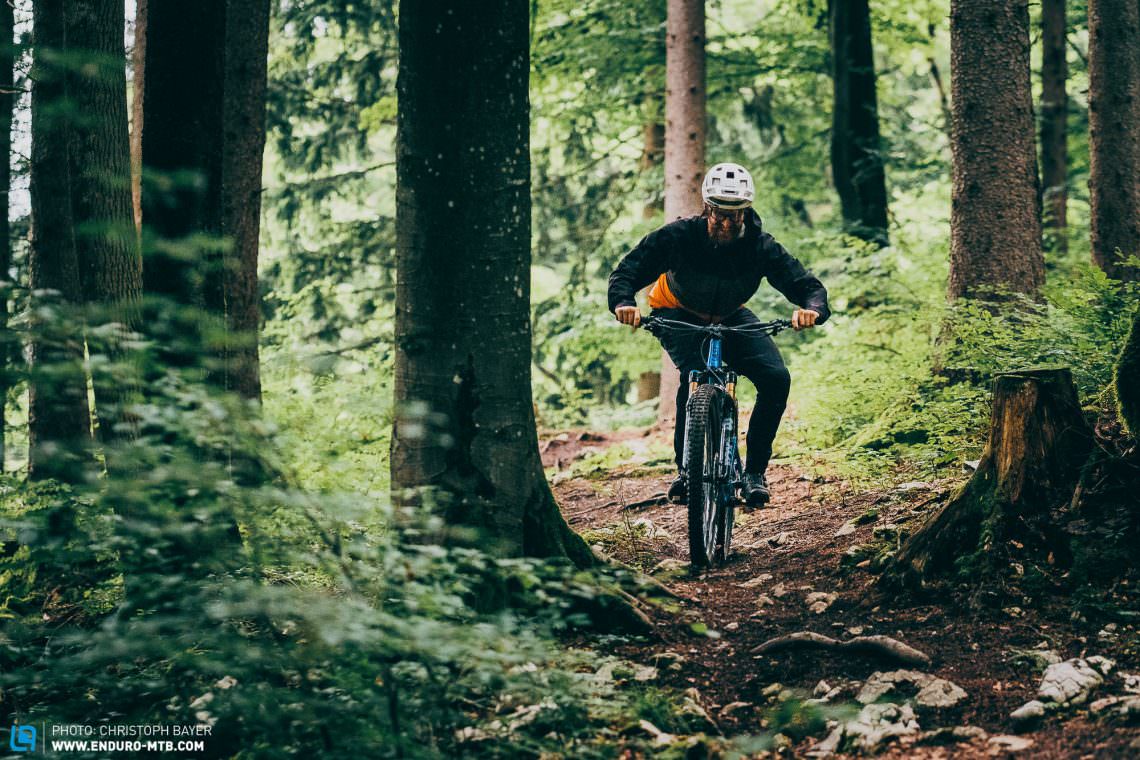


Fingers off the brakes, lean back and send it – The LAST COAL’s motto
Thanks to the long front triangle, there’s nothing to restrict your movement on the bike. Together with the high stack, this instils you with confidence in steep terrain. Just lean back and send it! Despite its 29″ wheels, the LAST COAL feels quick and willing as it changes direction and you’re always able to generate enough grip on both wheels even on open, off-camber section. With its slack geometry, the bike feels particularly comfortable on steep trails, whereas riders who predominantly ride on flatter terrain will be better off with the GLEN.
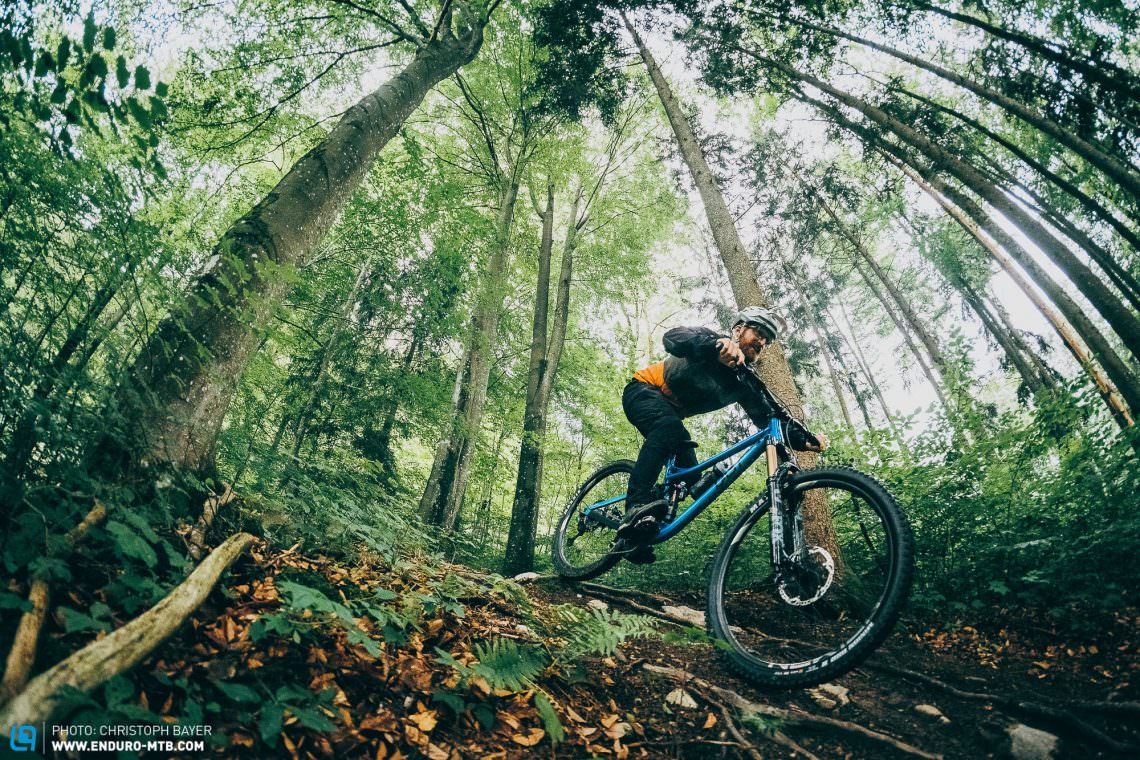
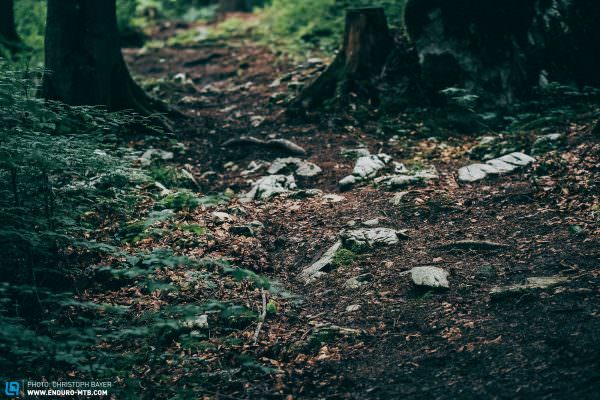

Climbing to the top of the trailhead is a relaxed affair onboard the COAL. The rear end is very efficient, hardly bobbing as you pedal and it doesn’t sag into its travel. This, together with the appropriately steep seat tube angle, positions you centrally on the bike no matter how steep the climbs and you never get the impression that you’re hanging over the back wheel. Our test bike came equipped with a 30 t chainring, which, combined with the 51t sprocket of the Shimano drivetrain, offered the perfect gearing ratio for those nasty climbs.
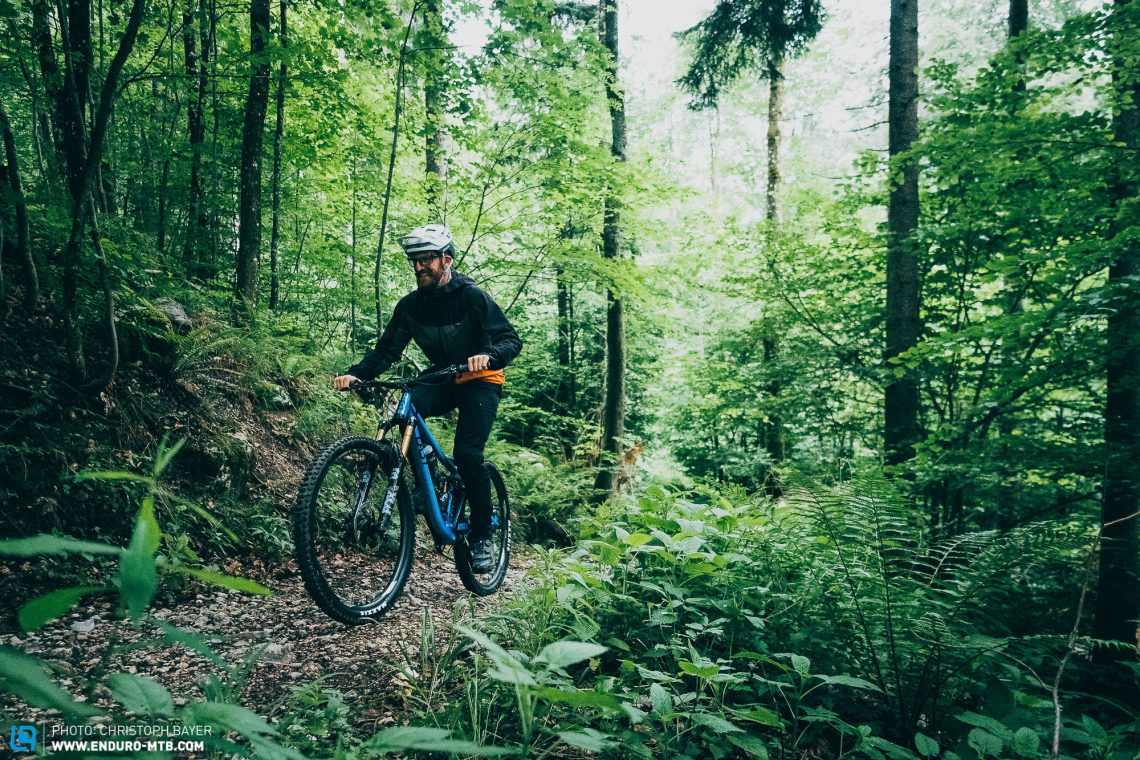
Our conclusion on the new, 2021 LAST COAL 29
LAST are sure to have landed a big hit with the new COAL. The bike’s handling is balanced, it climbs well and it’s a lot of fun to ride thanks to the progressive rear end. If you like having a good time and looking for a high-quality bike with great attention to detail, this is it. The rear end is very progressive, offering a lot of pop and near-endless reserves. However, if you prefer your suspension plush and sensitive, you’ll need the coil shock. No problem with online configurator.
Tops
- very capable bike for demanding trails
- near-endless reserves at the rear
- efficient climber
- high-quality workmanship
- customisable spec
Flops
- moderate traction and comfort with the air shock
Note about the test:
On the prototype bike that LAST sent us for this review the chainstay protector didn’t work, resulting in a loud bike and chipped chainstay. After we reported this to LAST, they developed an improved version which should feature on the production models.


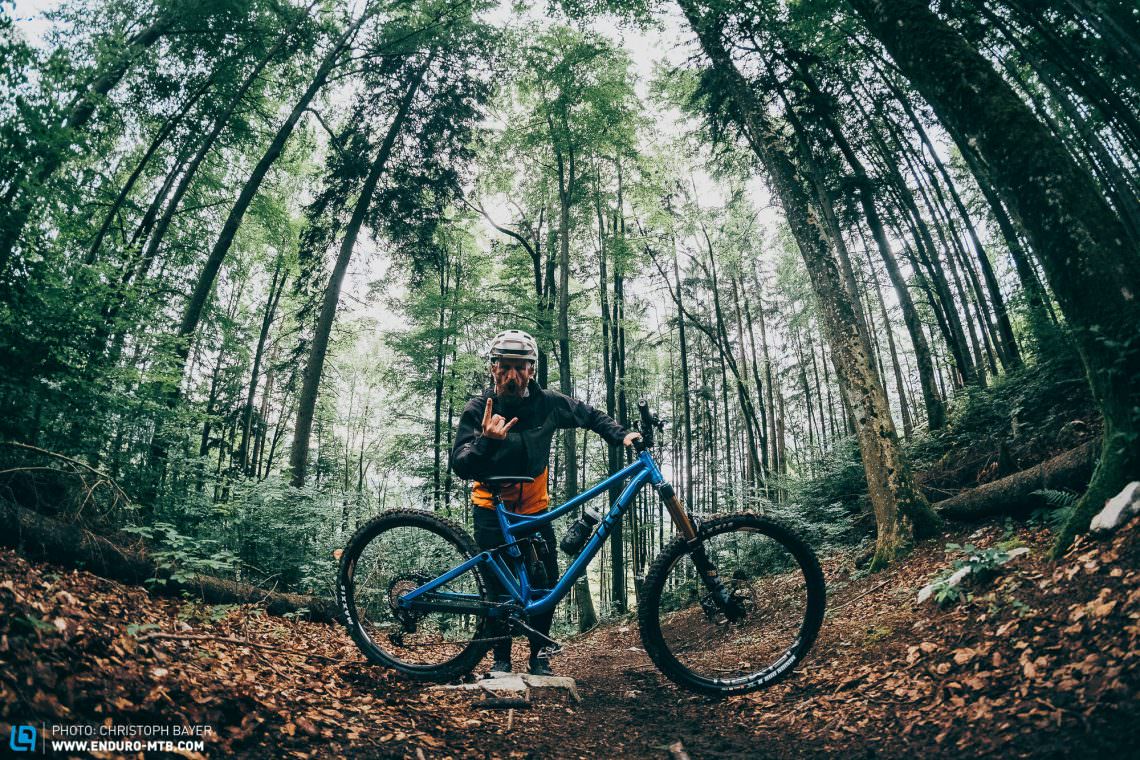
For more information visit the LAST Bikes website.
Did you enjoy this article? If so, we would be stoked if you decide to support us with a monthly contribution. By becoming a supporter of ENDURO, you will help secure a sustainable future for high-quality mountain bike journalism. Click here to learn more.
Words & Photos:




